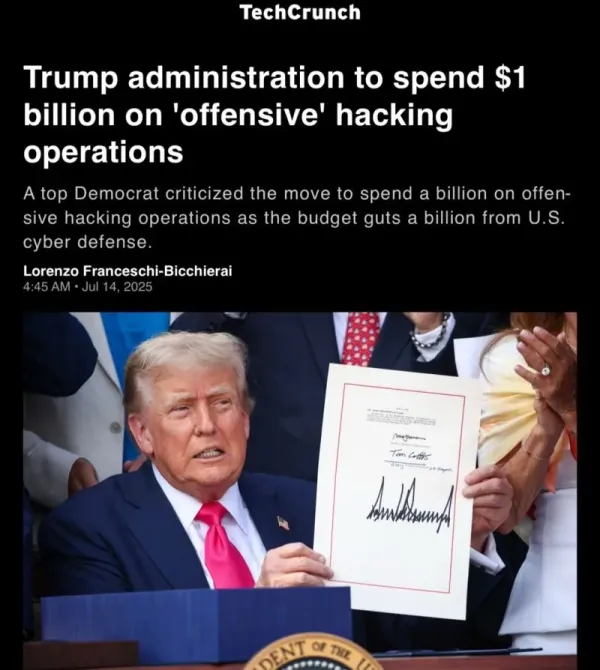The AI Layoffs Begin: How Artificial Intelligence is Reshaping the Tech Workforce

Introduction
The tech industry is experiencing a seismic shift as artificial intelligence transforms from a promising technology into a workplace disruptor. Major companies that once championed AI as a tool to augment human capabilities are now using it to replace workers entirely. From Microsoft's 6,000-person reduction to Duolingo's transformation into an "AI-first" company, the promise of AI efficiency is colliding with the harsh reality of human job displacement.
This wave of AI-driven layoffs represents more than just another round of tech industry restructuring. It signals a fundamental change in how companies view their workforce, with AI no longer seen as a complement to human workers but as their replacement. The numbers are staggering: over 52,000 tech employees have already been laid off in 2025, with AI increasingly cited as either a direct cause or the investment priority that necessitates workforce reductions.

The Scale of the Crisis
The magnitude of AI-related job displacement has exceeded even pessimistic predictions. According to Layoffs.fyi, over 52,340 employees have been laid off across over 123 tech companies in 2025, continuing a trend that saw 152,472 tech workers lose their jobs in 2024. What makes this wave particularly concerning is the explicit connection to AI adoption.
A recent survey found that 51% of U.K. business leaders planned to "redirect investment from staff to AI", while 41% of C-suite executives expected to employ fewer people due to the emerging technology, according to a global survey by The Adecco Group and Oxford Economics.
The pattern is clear: companies are systematically replacing human workers with AI systems, often while simultaneously reporting record profits and massive AI investments. This isn't the typical boom-bust cycle of Silicon Valley—it's a structural transformation of the workforce.
Google/Alphabet: Streamlining for AI While Cutting Human Roles
Google, despite reporting strong financial results, has been systematically reducing its workforce across multiple divisions. The company laid off about 200 employees from its core sales and partnerships teams in May 2025, with many roles being relocated to hubs in cities like Atlanta, Chicago, and Dublin.
This follows a pattern of cuts throughout 2025: in April, Google laid off hundreds of employees in its platforms and devices unit, which houses the Android platform, Pixel phones, and the Chrome browser. The company has been redirecting spending towards data centers and AI development while scaling back investments in other areas of the business.
What makes Google's approach particularly telling is that it's happening amid strong financial performance. Alphabet reported revenue of $66.89 billion from its core advertising business in Q1 2025, beating analyst expectations. Yet the company continues to cut, suggesting that AI investment is driving workforce reduction regardless of profitability.
Microsoft: The $80 Billion Bet Against Human Workers
Microsoft's recent layoffs exemplify the brutal calculus of the AI age. The company laid off about 6,000 workers on Tuesday, nearly 3% of its entire workforce, marking its largest job cuts in more than two years. What makes these cuts particularly telling is their timing and target.
Over 40% of the people laid off were in software engineering, traditionally considered safe from automation. This comes after CEO Satya Nadella said last month that up to 30% of the company's code was now written by AI. The connection seems clear: as AI takes over coding tasks, Microsoft needs fewer human programmers.
The financial context makes these layoffs even more striking. Microsoft has said it has been spending $80 billion (€71.4bn) in the fiscal year that ends in June on building data centres and other infrastructure it needs to develop its artificial intelligence technology. The company is literally spending billions to build the infrastructure that makes human workers obsolete.
Duolingo: From "AI-First" to Human Displacement
Perhaps no company better illustrates the human cost of AI adoption than Duolingo. Duolingo has already replaced up to 100 of its workers—primarily the writers and translators who create the quirky quizzes and learning materials that have helped stake out the company's identity—with AI systems.
The company's CEO, Luis von Ahn, announced in April 2025 that Duolingo would be "AI-first," gradually phasing out contractors for work that AI can handle. The company cut around 10% of its contractor workforce at the end of 2023, and Merchant said there was another round of cuts in October 2024. In both cases, contractors were replaced with AI.
A former Duolingo contractor captured the human impact: "I was a content writer, I wrote the questions that learners see in the lessons. I enjoyed being able be creative. We were encouraged to make the exercises fun". Now that creativity is being replaced by AI that produces what the same worker describes as "very boring" content that "often gets things wrong."
Chegg: When AI Disrupts Your Entire Business Model
The education technology company Chegg represents perhaps the most dramatic example of AI disruption. Chegg announced on Monday that it will lay off approximately 22% of its workforce, or 248 employees, to cut costs and streamline operations. The reason? Students are abandoning traditional edtech platforms for free AI tools like ChatGPT.
The numbers tell a devastating story: Chegg's first-quarter 2025 results show a 31% drop in subscribers to 3.2 million and a 30% decline in revenue to $121 million. The company has lost about 90% of its market value since going public in 2013, with its stock hovering just above $1 per share.
CEO Nathan Schultz acknowledged the challenges, stating that macroeconomic trends and AI competition are putting pressure on the company. Chegg even sued Google, claiming the search giant's AI features were diverting traffic and undermining its business model. But the writing is on the wall: when free AI can instantly answer homework questions, why would students pay for Chegg?
Klarna: The AI Experiment That Went Too Far
Klarna's journey with AI serves as a cautionary tale about the limits of automation. In February 2024, the company claimed AI could do the work of 700 customer service agents and had taken on 75% of the company's customer chats. CEO Sebastian Siemiatkowski boasted about the efficiency gains and cost savings.
But by 2025, the company was forced to reverse course. Siemiatkowski told Bloomberg that Klarna is hiring human workers again to ensure that customers always have a human presence to talk to, if needed. He admitted that while AI customer service chatbots were cheaper to employ than human staff, they resulted in a "lower quality" output.
Klarna's headcount fell from 5,527 full-time employees as of the end of December 2022 to 3,422 staffers last December, a reduction of nearly 40%. The company is now trying to find a balance, but the damage to its workforce—and potentially its reputation—has been done.
The Hidden Costs of AI Adoption
While companies tout efficiency gains and cost savings, the real-world impact of AI adoption is becoming clear. IBM's approach is particularly revealing: IBM has reportedly laid off around 8,000 employees, with the majority of job losses concentrated in the Human Resources (HR) department. The company replaced approximately 200 HR roles with AI agents capable of handling repetitive administrative tasks.
IBM CEO Arvind Krishna tried to soften the blow, claiming that "While we have done a huge amount of work inside IBM on leveraging AI and automation on certain enterprise workflows, our total employment has actually gone up". But this rings hollow to the thousands who lost their jobs to algorithms.
The pattern extends across the industry:
- PwC: Laying off 1,500 US employees in a "post-pandemic recalibration and repositioning push"
- Salesforce: Cutting approximately 1,000 jobs, mostly in marketing and non-technical roles
- Meta: Announcing 5% cuts expected to affect over 3,600 employees
- Dell: Cutting 12,000 employees in an effort to pivot to AI infrastructure and edge computing
- HP: Slashing 2,000 staff to fund new AI PCs launch
The Hidden Costs of AI Adoption
While companies tout efficiency gains and cost savings, the real-world impact of AI adoption is becoming clear. IBM's approach is particularly revealing: IBM has reportedly laid off around 8,000 employees, with the majority of job losses concentrated in the Human Resources (HR) department. The company replaced approximately 200 HR roles with AI agents capable of handling repetitive administrative tasks.
IBM CEO Arvind Krishna tried to soften the blow, claiming that "While we have done a huge amount of work inside IBM on leveraging AI and automation on certain enterprise workflows, our total employment has actually gone up". But this rings hollow to the thousands who lost their jobs to algorithms.
The pattern extends across the industry:
- PwC: Laying off 1,500 US employees (2% of its 75,000-person US workforce) in May 2025, primarily affecting audit and tax divisions. The firm cited "historically low levels of attrition" and the need for "workforce recalibration" - essentially, people weren't leaving fast enough, so they forced them out
- Salesforce: Cutting approximately 1,000 jobs, mostly in marketing and non-technical roles
- Meta: Announcing 5% cuts expected to affect over 3,600 employees, targeting "low performers" as the company prepares for an "intense year"
- Dell: Cutting a staggering 12,000 employees (10% of workforce) in fiscal year 2025, bringing total job losses to 25,000 since 2023 as it pivots toward AI infrastructure and edge computing
- HP: Slashing up to 2,000 staff to save $300 million, part of a broader restructuring that has already cut 9,000 jobs since November 2022 to fund new AI PCs launch
Dell and HP: Legacy Giants Sacrificing Workers for AI Transformation
Dell's transformation has been particularly brutal. The company reduced its workforce from approximately 120,000 in the previous year to about 108,000 as of January 31, 2025. This 10% reduction is part of Dell's broader strategy to manage costs amid an evolving technological landscape and pivot toward AI-powered products and services.
An internal Dell memo revealed the company is "getting leaner" and "streamlining layers of management," with executives Bill Scannell and John Byrne stating the company aims to "reorganize its business for the AI era." The layoffs primarily impacted managers and senior managers, some with over two decades of experience at the company.
HP's story is similar. The company announced plans to cut between 1,000-2,000 jobs this year as part of a structural savings programme that will save the business an additional $300 million. HP CEO Enrique Lores framed it as positioning the company to "lead the future of work," with investments in AI PCs and customer experience. But for the thousands losing their jobs, the future of work looks bleak.
Both companies face the same challenge: declining PC sales and the need to pivot to AI and cloud infrastructure. Their solution? Cut human workers while investing billions in AI infrastructure that will make even more workers obsolete.
The Human Impact
Behind every statistic is a human story. Parul Koul, a Google software engineer and president of the grassroots Alphabet Workers Union, slammed the layoffs as "unnecessary and counterproductive", noting that "The layoffs introduce chaos and instability into the workplace and force workers to make do with less".
"This is the first time I've had to lay people off to support business goals that aren't my own," wrote Scott Hanselman, a vice president of Microsoft's developer community. His candid admission continues: "I often have trouble separating my beliefs with the system that I participate in and am complicit in".
The psychological impact extends beyond those laid off. Workers who remain face constant anxiety about their job security. As AI capabilities expand, no role seems safe—from entry-level positions to senior management, from creative roles to technical positions.
The Broader Economic Implications
The AI-driven transformation of work extends far beyond individual companies. Goldman Sachs economists said in a research note last March that as many as 300 million full-time jobs around the world could be lost or diminished by the rise of generative AI technology.
The concentration of these layoffs in certain demographics is also concerning. A coalition of more than two dozen Black lawmakers led by Democratic Reps. Emanuel Cleaver of Missouri and Barbara Lee of California expressed concerns over the "impacts of widespread layoffs within the tech industry and its disproportionate impacts on the African American community and women".
The Investment Paradox
Perhaps the most troubling aspect of this trend is the simultaneous massive investment in AI while cutting human workers. Companies are pouring billions into AI infrastructure while claiming they can't afford to keep their employees. This creates a self-fulfilling prophecy: the more companies invest in AI, the more pressure they feel to cut costs elsewhere to justify those investments.
"We know 2023 was the year of generative AI and companies invested in it heavily," Columbia University business professor Oded Netzer told CBS MoneyWatch. "That means there are some jobs they've decided to invest less in, and they may be laying off workers".
Looking Forward: Is There Hope?
Not all experts believe AI will lead to permanent job losses. Some argue that new technologies historically create more jobs than they destroy. But the speed and scale of current changes are unprecedented. Unlike previous technological revolutions that displaced manual labor, AI is coming for knowledge work—the very jobs that previous automation created.
"A lot of training and re-skilling may be a common outcome. There may be some layoffs with the enhancement of other jobs," said Mark Muro of the Brookings Institution. But this optimistic view requires companies to invest in their workers' futures—something that current trends suggest they're unwilling to do.
Conclusion: The Algorithm of Sacrifice
The AI layoffs are not a distant threat—they're happening now, affecting hundreds of thousands of workers across the tech industry and beyond. As companies race to implement AI solutions, they're discovering that the technology's primary value proposition isn't enhancing human productivity but replacing human workers entirely.
The numbers are staggering and worth repeating:
- Microsoft: 6,000 workers laid off while spending $80 billion on AI
- Dell: 12,000 employees cut in one year alone
- IBM: 8,000 jobs eliminated, particularly in HR
- Google/Alphabet: Continuous cuts across divisions despite strong profits
- Duolingo: "AI-first" means contractors-last
- Chegg: 22% of workforce gone as AI disrupts entire business model
- Klarna: From bragging about replacing 700 workers to begging humans to come back
- HP, PwC, Salesforce, Meta: Thousands more sacrificed on the altar of AI efficiency
The image that sparked this investigation—showing companies systematically replacing workers with AI—represents just the beginning. As Satya Nadella proudly proclaimed that AI now writes 30% of Microsoft's code, and as more CEOs follow Luis von Ahn's lead in declaring their companies "AI-first," we're witnessing the start of a transformation that will reshape not just the tech industry but the entire nature of work.
What's particularly galling is the timing. These layoffs come as many of these companies report record profits and massive AI investments. They're not cutting jobs because they're struggling—they're cutting jobs because they can, because AI gives them the excuse they've always wanted to create leaner, more "efficient" organizations where efficiency is measured solely in profit margins, not human potential.
The warning signs were there. When Marna Whittington of Phillips 66 suggested that AI could reduce costs through trouble that's "going to be through headcount," she was saying the quiet part out loud. When companies frame layoffs as making room for AI investments, they're admitting that in their calculus, human workers are simply a cost to be optimized away.
As one laid-off Duolingo contractor poignantly noted, "So much will be lost." They were talking about more than just jobs—they were talking about the human creativity, empathy, and judgment that no algorithm can truly replace. Yet in boardrooms across Silicon Valley and beyond, those human qualities are being reduced to line items on a spreadsheet, easily erased in pursuit of an AI-powered future that may prove far less utopian than its architects imagine.
The time for debate about whether AI will take jobs is over. It's taking them now, today, by the thousands. The question is whether we as a society will allow this transformation to proceed without safeguards for the millions of workers whose livelihoods hang in the balance. The algorithm of sacrifice has been written, and it's executing flawlessly. The only bug in the system might be our humanity—if we choose to assert it before it's too late.





